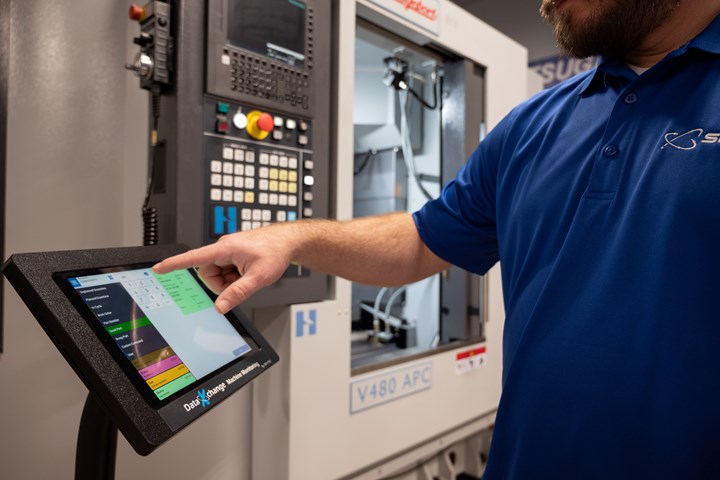Machine Monitoring Enhances a Mold Builder's Automation Strategy
Through data exchange across all shop equipment and enhanced communication options, software like Scytec DataXchange offered by Shop Floor Automations gives the potential to identify inefficiencies and achieve predictive maintenance quickly via real-time monitoring.
Scytec DataXchange, a machine monitoring software available through North American manufacturing integrator Shop Floor Automations, is a key component to a mold builder’s automation strategy to gain real-time visibility and manufacturing integration across all robots and CNC, fabrication, assembly and manual equipment on the shop floor.
Scytec DataXchange is a Cloud and on-premise overall equipment effectiveness (OEE) and analytic manufacturing system with features that can automatically collect OEE metric data such as utilization, part counts and downtimes; monitor legacy CNCs, manual machines, welders, robots and more; maintains customizable data collection rules; and offers unlimited use of reports, charts and manufacturing dashboards.
In addition to earning a return on investment (ROI), Scytec DataXchange gives moldmakers the potential to identify inefficiencies and provides predictive maintenance (PdM).
Useful machine data, such as setup time changes or temperature fluctuations, can be made available to the appropriate shop personnel and leadership in real time through the automated Teams messaging feature of Scytec DataXchange machine monitoring.
Shop Floor Automation also identifies Scytec DataXchange’s ability to enhance communication. Proper conveying of information to the user via automated emails, Teams and text messaging, for instance, can ensure s/he is notified precisely when a specified percentage of parts remain. DataXchange matches work/shop orders and part counts to the established threshold and facilitates the notification so managers are prepared for the next material delivery before material levels are exhausted.
By monitoring machine performance, communicating key data points and analyzing data, a company can identify bottlenecks, downtime and other issues, like lengthy overrides, that may be slowing down operations. Users are also able to identify when maintenance is needed before a breakdown occurs. The tracking of vibration analysis, hours run, oil analysis, thermal imaging and other data inputs help determine patterns in machine performance to ultimately avoid costly repairs and downtime, while also prolonging the lifespan of equipment.
Related Content
-
How to Manage a CAD Library
Learn five ways to organize your mold design information.
-
How to Select a Mold Temperature Controller
White paper shares how cooling channel analysis, which collects maximum pressure drop, total flow rate and heat dissipation, eases the performance evaluation of mold temperature controllers.
-
What Is Scientific Maintenance? Part 1
Part one of this three-part series explains how to create a scientific maintenance plan based on a toolroom’s current data collection and usage.
















